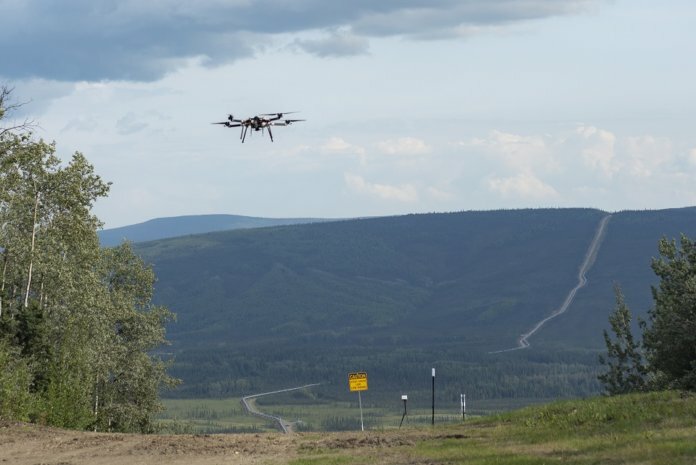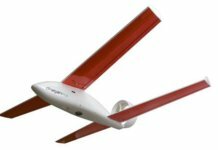A team led by the University of Alaska Fairbanks (UAF) recently completed a beyond visual line of sight (BVLOS) flight of an unmanned aircraft system (UAS) along the trans-Alaska pipeline system (TAPS).
Operators from the university’s Alaska Center for Unmanned Aircraft Systems Integration (ACUASI) flew a Skyfront Perimeter long-range hybrid-electric drone 3.87 miles along TAPS, starting at a location near the Chatanika River on the Elliott Highway.
During the flight, the team used onboard and ground-based detection systems, instead of human observers, to detect and avoid other aircraft. Those included Iris Automation’s Casia, an onboard collision avoidance technology, and a 5-nautical-mile system consisting of eight ground-based Echodyne radars, which provided aviation radar coverage along the flight path.
“The ability to use UAVs for surveillance in remote areas of the pipeline increases the tools at our disposal to operate TAPS more reliably and safely and better protect Alaska’s environment. This innovative step forward will advance safe performance not just in our industry, but in multiple disciplines and workspaces across the country,” says Tom Barrett, president of Alyeska Pipeline Service Co., which operates TAPS.
The flights were conducted as part of the federal UAS Integration Pilot Program (IPP), which is designed to help further integrate drones into national airspace and find ways to safely fly BVLOS, carry out night operations and operate over people.
“The Integration Pilot Program is helping us advance the safe, secure and reliable integration of drones into the national airspace,” says Daniel K. Elwell, acting administrator of the FAA. “This important milestone in Alaska gets us closer to that goal.”
The Alaska IPP goals include enabling routine monitoring flights of both the trans-Alaska oil pipeline and Hilcorp Alaska’s Swanson River Oil Pipeline, as well as delivering medical supplies to remote areas. The partners also have an overall goal of enabling BVLOS across Alaska 24/7.
“The integration of unmanned aircraft into America’s skies just took another important step toward realization,” says Cathy Cahill, director of ACUASI, which is part of the UAF Geophysical Institute. “These first flights demonstrated that new technology can provide a route toward safe beyond visual line of sight operation of unmanned aircraft in Alaska. We want to ensure the safety of manned aviation while opening new opportunities for unmanned aircraft cargo deliveries to villages, monitoring of infrastructure, mammal surveys and a host of other missions of use to Alaskans.”








